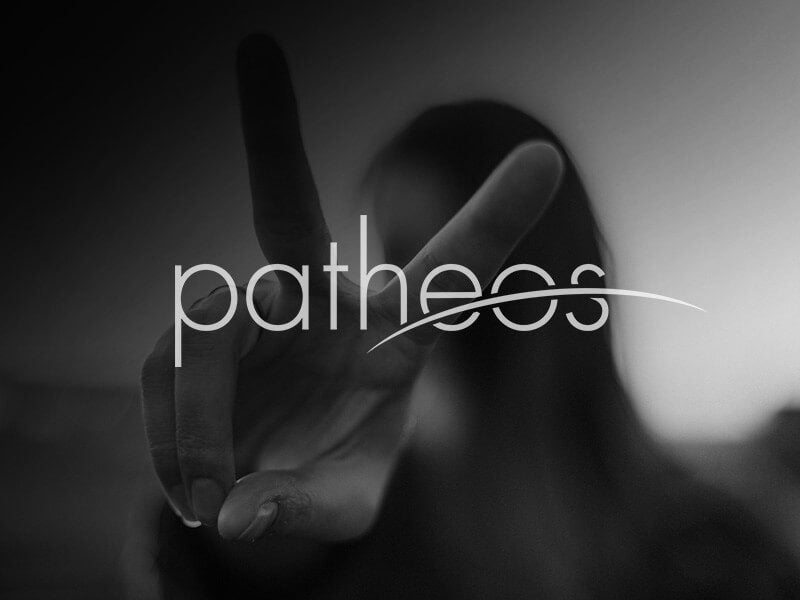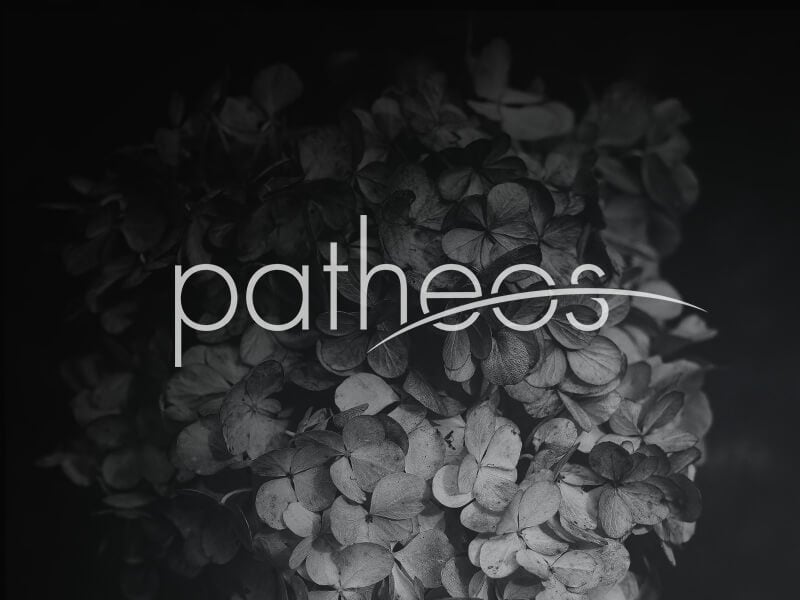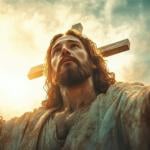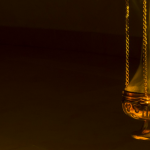New York City, N.Y., Sep 11, 2017 / 12:20 pm (CNA/EWTN News).- On the clear, sunny morning of Sept. 11, 2001, Fr. Kevin Madigan heard an explosion overhead. He grabbed oils for anointing, ran out the door of St. Peter's parish in New York City, and wandered towards the center of the commotion – the World Trade Center only a block away. Fifty blocks uptown, Fr. Christopher Keenan, OFM watched with the world as the smoke rising from the twin towers darkened the television screen. Looking to help, he went to St. Vincent's Hospital downtown to tend to those wounded in the attack – but the victims never came. All the while, he wondered what had happened to a brother friar assigned as chaplain to the firefighters of New York City: Fr. Mychal Judge, OFM, named by some the “Saint of 9/11.” Sixteen years ago on this day, hijackers flew planes into the Twin Towers of the World Trade Center in New York City, and the Pentagon in Arlington, Virginia. In a field in southern Pennsylvania, passengers retook control of the cockpit and crashed the plane before it could reach its intended target, presumed to be in Washington, D.C. The consequences of the attacks have rippled throughout the United States as the attacks spurred a new global war on terror and irreversibly changed the country’s outlook on terror, security, and international engagement. For Fr. Madigan, Fr. Keenan and Fr. Judge, the day changed their own lives and ministries, as a pastor lost nearly his entire congregation, and a friar put himself in harm's way to take on a new position – an assignment he only received because another friar gave the ultimate sacrifice as the Twin Towers came down. “This experience has seared our soul and our spirit and our life, and it has so seared our spirit and our life that it has penetrated our DNA,” Fr. Keenan told CNA. “It has changed our lives and we will never be the same,” he said.It was like losing a village On Sept. 11, 2001, Fr. Kevin Madigan had been assigned to St. Peter’s Church in the financial district of Lower Manhattan. The parish is the oldest Catholic Church in New York State, “half a block literally from the corner of the World Trade Center,” Fr. Madigan explained to CNA. “Prior to 9/11 it was a parish that basically serviced the people who came to the neighborhood who came to Mass or Confession, devotions and things like that.” The parish had a full and well-attended schedule of liturgies and prayers, with multiple Masses said during the morning and lunch hour. September 11th changed that. “Immediately after 9/11, that community was no longer there, because it was like losing a village of 40,000 people next door.” Fr. Madigan was leaving the sanctuary that morning, heading back to the rectory when overhead he heard the first plane hit the towers. Immediately he made his way towards the commotion, looking to minister to anyone who had been hurt by what had happened. “I took the oils for anointing anyone who was dying – I didn’t know what was going on there,” he said. However, most of those fleeing the building did not need anointing, Fr. Madigan recalled. “Most people either got out alive or were dead. There weren’t that many people who were in that in-between area.” Then, there was another explosion from the other tower, and an object – the wheel of an airplane, in fact – went whizzing by Fr. Madigan’s head. “After the second plane hit I went back to the office and made sure all the staff got out of there fast,” evacuating staff who were unaware of the chaos outside. Fr. Madigan was back on the street when firefighters began to wonder if the towers might fall. Thinking it ridiculous, Fr. Madigan kept an eye on a nearby subway entrance, which linked to an underground passage north of the towers. Then, a massive cloud of dust swept towards Fr. Madigan and another priest as the towers did collapse; they ducked into the subway station, emerging amidst the thick smoke and dust several blocks away. After the towers came down, Fr. Madigan made his way first to the hospital for an emergency health screening, then back to check on St. Peter’s. While he was away from his parish, firefighters and other first responders made use of the sanctuary, temporarily laying to rest over 30 bodies recovered from the wreckage.The death of Father Mychal In September of 2001, Fr. Christopher Keenan had been assigned to work with a community ministry program near the parish of St. Francis in midtown Manhattan. At St. Francis, he lived in community along with several other Franciscan Friars, including an old friend he had known for years – Fr. Mychal Judge, chaplain for the Fire Department of New York City. Through Fr. Judge, the Friars became especially close with some of their neighbors at a firehouse across the street, who let the friars park their car at the firehouse. Although the plane flew overhead, Fr. Keenan told CNA that “like everyone else, we found out while watching TV.” As the friars and brothers watched the events unfold on the television, they saw the second plane hit the South Tower; Fr. Keenan decided to go to St. Vincent’s Hospital – one of the closest medical facilities to the Word Trade Center. At the time, he thought there would be injured people who would need to be anointed or would like someone to hear their confession. However, once he got to St. Vincent’s he found a long line of doctors, nurses and other responders who had come to help: together they “were all waiting for these people to get out who never came.” Victims were either largely able to walk away on their own, or they never made it to the hospital at all. Instead, Fr. Keenan told CNA, “my responsibility was after people were treated to contact their family members to come and get them.” As patients began to go home, Fr. Keenan continued to wonder about his brother friar, Fr. Judge, asking firefighters if they knew what had happened to the chaplain. Fr. Keenan left the hospital in the early evening to go hear confessions, but stopped at the firehouse across the street to ask the firemen if they knew where Fr. Judge was: “they told me his body was in the back of the firehouse.” The mere fact that his body was intact and present at the firehouse that day was in itself a small miracle, Fr. Keenan said. “Mychal's body that was brought out was one of the only bodies that was intact, recognizable and viewable,” he said. Among those that died in the Twin Towers, he continued, “everyone was vaporized, pulverized and cremated” by the heat of the fire in the towers and the violence of the towers’ collapse. “He was one of the only ones able to be brought out and to be brought home.” That morning, Fr. Judge had gone along with Battalion 1 to answer a call in a neighborhood close to the Trade Center. Also with the battalion were two French filmmakers filming a documentary on the fire unit. When the towers were hit, the Battalion was one of the first to arrive on the scene. In the film released by the brothers, Fr. Keenan said, “you can see his face and you can tell he knows what’s happening and his lips are moving and you can tell he’s praying his rosary.” The group entered the lobby of the North Tower and stood in the Mezzanine as the South Tower collapsed – spraying glass, debris and dust throughout the building. “All the debris roared through the glass mezzanine like a roaring train and his body happened to be blown into the escalators,” Fr. Keenan relayed the experience eyewitnesses told him. In the impact, Fr. Judge hit his head on a piece of debris, killing him almost instantly. “All of a sudden they feel something at their feet and it was Mychal, but he was gone.“ Members of the fire department, police department and other first responders carried Fr. Judge’s body out of the wreckage, putting his body down first to run as the second tower collapsed, then again to temporarily rest it at St. Peter’s Church. Members of the fire department brought it back to the firehouse where Fr. Keenan saw his friend and prayed over his body. Fr. Mychal Judge was later listed as Victim 0001 – the first death certificate processed on 9/11. Despite the sudden and unexpected nature of the attacks, Fr. Keenan told CNA that in the weeks before his friend’s death, Fr. Judge had a sense his death was near. “He just had a sense that the Lord Jesus was coming.” On several occasions, Fr. Keenan said, Fr. Judge had told him, “You know, Chrissy, the Lord will be coming for me,” and made other references to his death. “He had a sense that the Lord was coming for him.”The grueling aftermath “There was no playbook for how you deal with something in the wake of something like that,” Fr. Madigan said of the aftermath of 9/11. Personally, Fr. Madigan told CNA, he was well-prepared spiritually and mentally for the senseless nature of the attacks. “I understand that innocent people get killed tragically all the time,” he said, noting that while the scale was larger and hit so close to home, “life goes on.” For many others that he ministered to, however, “it did shake their foundations, their trust and belief in God.” While the attacks changed the focus of his ministry as a parish priest at the time, they also posed logistical challenges for ministry and aid: St. Peter’s usual congregation of people who worked in and around the World Trade Center vanished nearly overnight. Instead, the whole area was cordoned off for rescue workers and recovery activities as the city began the long task of sorting and removing the debris and rubble. In addition, a small chapel named St. Joseph's Chapel, which was cared for and administered by St. Peter’s, was used by FEMA workers as a base for recovery activities during the weeks after the attack. During that time, the sanctuary was damaged and several structures of the chapel, including the pulpit, chairs and interior were rendered unusable. According to Fr. Madigan, FEMA denies that it ever used the space. Still, the priests at St. Peter's saw it as their duty to minister to those that were there – whoever they were. “The parish, the church building itself was open that whole time,” he said, saying that anyone who had clearance to be within the Ground Zero area was welcome at the church. In the weeks after the attacks, the parish acted as sanctuary, as recovery workers who were discovering body parts and other personal effects “would come in there just to sort of try to get away from that space.” “Myself and one of the other priests would be out there each day just to be able to talk to anyone who wants to talk about what’s going on,” he added. “We'd celebrate Mass in a building nearby.” Today, Fr. Madigan has been reassigned to another parish in uptown Manhattan, and St. Peter’s now has found a new congregation as new residents have moved into the neighborhoods surrounding the former World Trade Center site. Only two months after the attack, Fr. Keenan took on the role of his old friend, Fr. Judge: he was installed as chaplain for the 14,000 first responders of the the FDNY. Immediately, Fr. Keenan joined the firefighters in their task of looking for the remains – even the most minute fragments – of the more than 2,600 people killed at the World Trade Center. “The rest of the recovery process then was for nine months trying to find the remains.” For the firefighters in particular, there was a drive to find the remains of the 343 firefighters killed at the World Trade Center and help bring closure to the family members. “You always bring your brother home, you never leave them on the battlefield,” Fr. Keenan said. The resulting amount of work, as well as the “intense” tradition among firefighters to attend all funerals for members killed in the line of duty meant that the job became all-consuming, with all one’s spare time spent at the World Trade Center site. Sometimes, Fr. Keenan said, he would attend as many as four, five, or six funerals or memorials a day – and many families held a second funeral if body parts were recovered from the site. “Here are the guys, overtime, going to all the funerals, working spare time on the site looking for recovery, and taking care of the families,” he said. “I was 24/7, 365 for 26 months.” In addition, Fr. Keenan and the rest of the FDNY worked inside “this incredible toxic brew” of smoke, chemicals and fires that burned among the ruins at Ground Zero for months. “I would be celebrating Mass at 10:00 on a Sunday morning down there,” he recalled, “and just 30 feet from where I’m celebrating Mass at the cross, the cranes are lifting up the steel.” While both buildings had contained more than 200 floors of offices, there was “not a trace of a computer, telephones, files, nothing. Everything was totally decimated.” Instead, all that was left was steel, dirt and the chemicals feeding the fires that smouldered underground in the footprint of the towers. “The cranes are lifting up the steel and the air is feeding the fires underneath, and out of that is coming these incredible colors of yellow, black and green smoke, and we all worked in the recovery process.” The experience working the recovery at the World Trade Center site is one that Fr. Keenan considers a “gift” and an “honor.” “It was an incredible experience really,” he said. Fr. Keenan recounted a conversation the firefighters had with him a few days after he was commissioned. After pledging to “offer my life to protect the people and property of New York City,” the other firefighters told their new chaplain “we know you’re ours, don’t you forget that every one of us is yours,” promising to stand by their new shepherd. “I’m the most loved and cared for person in the world and who has it better than me?” While the formal recovery process has ended and a new tower, One World Trade Center, stands just yards from the original site of Ground Zero, the experience – and the chemicals rescue workers came in contact with for months – still affect the firefighters. In 2016 alone, “we put 17 new names on the wall,” said Fr. Keenan, “who died this past year from of the effects of 9/11.” He explained that in the years following the attack, thousands of rescuers and first responders – including Fr. Keenan himself, have developed different cancers and illnesses linked to their exposure at the World Trade Center site. In fact, at the time of the interview in 2016, Fr. Keenan had just returned from a screening for the more than 20 toxic chemicals the responders were exposed to. He warned that the “different cancers and the lung problems that are emerging are just the tip of the iceberg,” and worried that as time progressed, other cancers and illnesses linked to the attack recovery would emerge. The first responders are also dealing with the psychological fallout of the attacks among themselves, Fr. Keenan said, though many are dealing with it in their own way, and with one another. Looking back, Fr. Keenan told CNA he still finds it difficult to express the experience to others or to make sense of what it was like when he would go down into “the pit” to work alongside the firefighters and other first responders. “The only image I had as time went on and I asked ‘how do I make sense of this as a man of faith?’ is that it was like I was descending into hell and I was seeing the face of God on the people that were there.” The same image had come to his mind to make sense of taking care of patients with AIDS in the 1990s he said, even though nothing can fully make sense of events like these. “I was like a midwife to people in their birthing process from life to death to new life,” he recalled. “All I can do is be present there, they have to do the work, I can be present there I can pray with them.” “That’s how in faith I kind of sort of comprehended it.” This article was originally published on CNA Sept. 11, 2016. Read more















